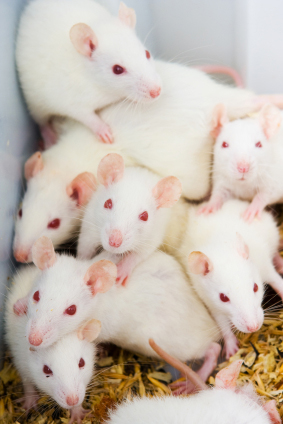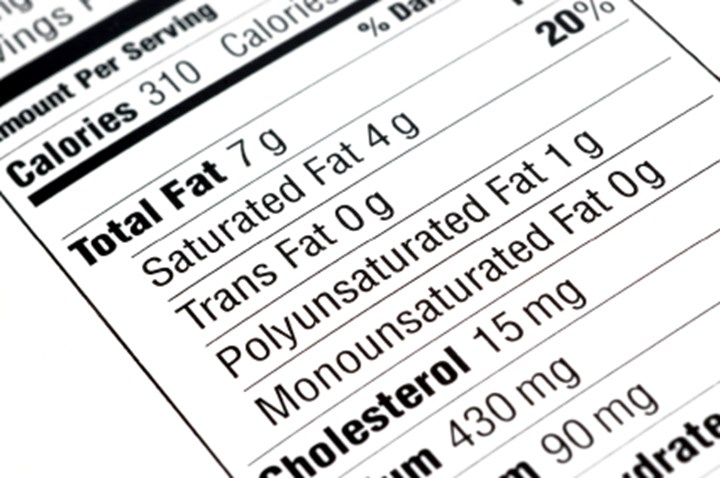Content Sections
- ● Feature overview:
- ● EFSA says no cancer risk and maintains approval of aspartame
- ● Cancer
- ● Ajinomoto defend EFSA stance
- ● How has EFSA dismissed the Ramazinni Foundation’s research?
- ● EFSA and the law
- ● Given what you know, are you prepared to let your child consume aspartame?
- ● How might aspartame harm you?
- ● A little history on aspartame
- ● Evaluating risk
- ● Where might you find aspartame?
- ● Joining the dots….
- ● Can EFSA sustain the heat?
ANH's Rob Verkerk PhD and Sophie Middleton investigate the European Food Safety Authority's second clearance of aspartame, in the wake of long-term studies on developing rats by a prestigious European research institute which showed that aspartame causes cancer.
Feature overview:
- Regulatory view: The US FDA and now the European Food Safety Authority (EFSA) would have you believe that the artificial sweetener, aspartame, is perfectly safe for use in well over 6000 common food and drink products worldwide.
- Science: Repeated independent scientific research has shown serious health impacts including the carcinogenic potential of aspartame, but this research has been swept aside in the face of corporate pressure—another scientific travesty.
- Side-effects: Aspartame is thought to be an addictive neurotoxin responsible for a wide range of neurological, behavioural and gastro-intestinal side-effects—earning a reputation for outnumbering all other foodstuffs in self-reported consumer complaints to the FDA.
- EFSA whitewash: Despite the findings of the Italy-based European Ramazzini Foundation, the most thorough investigations yet conducted into the carcinogenic potential of aspartame, EFSA have sided with the FDA and 'Big Food' who are making millions out of peddling this dangerous chemical to unsuspecting consumers.
- Consumer action: Make it it your purpose in 2009 to help educate all those you know and care about to stop any deliberate or unsuspecting consumption of aspartame.
EFSA says no cancer risk and maintains approval of aspartame
Aspartame, also identified as E951 on label ingredient lists, is the technical name for the non-nutritive artificial sweetener sold under the brand names NutraSweet, Equal, Spoonful, Equal-Measure, Canderel and various other names. The highest authority on food safety in Europe, the European Food Safety Authority (EFSA), has again declared the sweetener as safe, despite animal studies showing its carcinogenic potential and complaints of neurological, behavioural and gastro-intestinal side-effects by thousands of consumers around the world.
Aspartame has now lost its patent and is present in well over 6000 food products and is consumed by millions. It is thought to be an addictive neurotoxin that may cause a wide range of neuro-endocrine disrupting and carcinogenic effects. The amino-acid-based compound breaks down to create toxic by-products, namely formaldehyde, formic acid and aspartylphenylalanine diketopiperazine (DKP), the latter being associated with an increased rate of brain tumours in animal studies.
Self-reported claims of adverse reactions following the consumption of aspartame-containing soft drinks and foods outnumber all other complaints from other foodstuffs made to the US Food & Drug Administration (FDA). As early as 1994, a cross-over trial in the journal Neurology investigating the effects of aspartame concluded:
“This experiment provides evidence that, among individuals with self-reported headaches after ingestion of aspartame, a subset of this group report more headaches when tested under controlled conditions. It appears that some people are particularly susceptible to headaches caused by aspartame and may want to limit their consumption.”
Rob Verkerk of ANH, himself susceptible to the common neurological effects associated with unwitting consumption of aspartame says: “It is beyond belief that the FDA and EFSA continue to allow the sale of aspartame given the diverse range of problems caused by this sweetener. Severe headaches and other neurological and behavioural problems are just the thin end of the wedge.”
As UK medical doctor and journalist John Briffa put it in his editorial on the subject in the British Medical Journal (BMJ), “…although 100% of industry funded (either whole or in part) studies conclude that aspartame is safe, 92% of independently funded studies have found that aspartame has the potential for adverse effects.”
Dr Briffa was referring to an editorial published the year before in the BMJ by Drs Michael Lean and Catherine Hanckey which argued for the safety of the sweetener. Lean and Hanckey found themselves singing the same tune as so many of the manufacturers and suppliers of aspartame: “….aspartame comprises just two amino acids (aspartic acid and phenylalanine). Could this present a risk? Phenylalanine is a natural amino acid, and is toxic only in patients who have phenylketonuria"k.
Dr Nick Finer, a consultant in obesity medicine at a Cambridge hospital, with a self-declared competing interest, then chimed in claiming that the mechanistic arguments put forward by the likes of Drs Briffa and Mercola were over-simplistic. Finer’s arguments were along the lines of: Nowhere near enough amino acids are produced to flood the brain, while the methanol or formaldehyde quantities are also too small to cause any problem. Although Finer declared his interests at the base of the editorial as “medical advisor to Ajinomoto”, it’s unlikely that most readers of the esteemed journal would know that Ajinomoto Corporate Services holds 45% of the market share for worldwide aspartame production and that it is well known for its aggressive and effective defense of its commercial interests.
The problem is that Nick Finer, Michael Lean and Catherine Hanckey—along with hundreds of like-minded scientists and regulators around the world—fail to address the real problem. The fact is that millions appear to react adversely to aspartame, and while there is no proven mechanism explaining precisely how these effects are caused, this should not be taken to mean that they do not occur.
Cancer
Some of the most serious claims about aspartame relate to its potential carcinogenicity. One of the leading cancer research institutes in Europe, the Cesare Maltoni Cancer Research Center of the European Ramazzini Foundation, has found following two very detailed and long-term studies on rats that aspartame acts as a “multipotential carcinogen.”

Cancer susceptible Sprague-Dawley rats used in Ramazinni research
Read the abstracts of the Ramazinni Foundation’s research on aspartame, led by eminent scientist, Dr Morando Soffriti:
- Study 1: First experimental demonstration of the multipotential carcinogenic effects of aspartame administered in the feed to Sprague-Dawley rats
- Study 2: Life-span exposure to low doses of aspartame beginning during prenatal life increases cancer effects in rats
Other published work on the subject by Dr Soffriti:
- Results of long-term carcinogenicity bioassay on Sprague-Dawley rats exposed to aspartame administered in feed
- Consequences of exposure to carcinogens beginning during developmental life
Jennifer Couzin, in her article “Souring on Fake Sugar” (Couzin J. Science, Jul 2007; 317: 29c), discussed the Ramazinni studies in the prestigious journal Science:
“A study published last month in Environmental Health Perspectives found somewhat more leukemias and lymphomas in male rats receiving less aspartame than the recommended maximum for humans; at higher doses, the rats had a marked increase in cancers throughout the body. Pregnant rats were fed the sweetener, and animals received it once they’d been weaned. The work, by scientists at the European Ramazzini Foundation of Oncology and Environmental Sciences in Bologna, Italy, is “more sensitive and more realistic” than earlier aspartame studies……because the study conflicts with earlier work......FDA spokesperson Michael Herndon says that the agency finds the study unpersuasive and that ”aspartame is safe.” FDA’s European counterpart has not responded publicly to the study.”
Well, the news now is that EFSA has responded. And surprise, surprise, they have sided with the FDA (the US regulator), Ajinomoto (the manufacturer), Coca-Cola (the marketer) and the many hundreds of food companies that profit from including aspartame in their products. In a travesty to science, EFSA, like the FDA, with which it has signed an agreement of cooperation in 2007, has rejected the Ramazzini findings, despite they being the most thorough investigations yet conducted into the carcinogenic potential of aspartame.
To read EFSA’s whitewashing of the both Ramazinni Foundation studies, see below:
Ajinomoto defend EFSA stance
Click here to read Ajinomoto’s response in Environmental Health Perspectives (2007) supporting EFSA’s findings against Dr Soffriti and the Ramazinni Foundation.
Dr Soffriti’s response is given at the base of the Ajinomoto response, as follows:
As communicated in his letter, Abegaz represents Ajinomoto Corporate Services LLC. Ajinomoto, which holds 45% of the market share for worldwide aspartame production (Ajinomoto 2006), is well known for its aggressive and effective defense of its commercial interests. The action by Abegaz to reproduce portions of the opinion issued by the European Food Safety Authority (2006) regarding the results of our long-term carcinogenesis bioassay on aspartame (Soffritti et al. 2006) is clearly specious.
The author declares he has no competing financial interests.
Morando Soffritti
European Foundation of Oncology and Environmental Sciences “B. Ramazzini”
Cesare Maltoni Cancer Research Center
Bologna, Italy
How has EFSA dismissed the Ramazinni Foundation’s research?
There are two simple answers to this question:
1. The high rate of cancer in rats fed aspartame over a lifetime is dismissed because most of the rats dying of cancer were found to be suffering inflammatory conditions. Despite the fact there is copious research showing that cancer (like all the other major chronic diseases) is effectively an inflammatory disease, where inflammation acts as a trigger to the development of cancer, EFSA has discounted the relationship between inflammation and aspartame. One wonders if inflammation might not be the cause of the widespread headache and other neurological problems associated with aspartame?
2. The high rate of mammary cancers in the rats fed aspartame is dismissed because the rats were found to anyway be susceptible to mammary cancer. This is a ridiculous argument, given that all laboratory rats used in carcinogenicity tests are susceptible to cancer; the whole point is to see if there is an increased rate of cancer in treated as compared with untreated (control) rats. In this case there clearly is, but EFSA are using the classic ‘get out’ used by the big vested interests.
EFSA and the law
It beggars belief given EFSA’s remit under the terms of general food law (Regulation No 178/2002/EC) in Europe that EFSA has seen fit to categorise aspartame as safe at the average daily intake (ADI) of 40 mg/kg of body weight (incidentally, this was the level found to cause cancer in rats in the Ramazinni study). This law introduces the precautionary principle and specifically states that where there is scientific uncertainty over the safety of a food or food ingredient, measures should be taken to minimize risk to public health.
EFSA has failed to adequately consider the Ramazinni Foundation’s research, and—possibly even more astonishing—it has ignored copious other scientific reports as well as the thousands of complaints by consumers who have suffered adverse reactions from taking aspartame.
Who are the scientists responsible for the evaluation?
In an attempt to appear transparent, EFSA list the members of the panels responsible for their risk assessments. The previous AFC panel which oversaw aspartame, has now been incorporated into the ANS panel (that deals with food additives and nutrient sources added to food). Its 21 members are fully listed along with their interests and affiliations. Its chair is Prof John Larsen who is an advisor to the International Life Sciences Institute (ILSI) which represents a large number aspartame interests including Coca-Cola, Danone, Unilever, Kraft, Merisant (manufacturer of Equal, which recently filed for bankruptcy) and other well-known Big Food producers. Jean-Charles LeBlanc also advises ILSI, while Ivonne Rietjens goes one step further, sitting on the Board of Trustees of ILSI. In case you thought there was were only ILSI interests represented, Jürgen Konig advises Danone (that's not averse to including aspartame in its dairy products), while Dominique Parent-Massin advises Ajinomoto itself, which controls some 45% of the global market of aspartame.
So much for scientific independence.
The European authority tries to get itself off the hook by issuing its standard disclaimer for aspartame, which reads as follows:
"The Authority neither authorises nor bans the use of substances in foods. It is the responsibility of risk managers in the European Commission, the European Parliament and the EU Member States to define and agree measures as and where required, taking into account scientific advice and other considerations."
And we all know that there will be no significant EU-wide bans on aspartame until EFSA says the sweetener is dangerous!
This is yet another remarkable chapter in commercial influence over regulatory authorities. Given the wide distribution of additives like aspartame in the food supply, the unknown but likely deleterious effects of mixtures of these additives in the food supply (as so well illustrated in Dr Soffriti’s 2008 paper), the cost to public health is likely to be immense.
It seems likely, as with the recognition of the carcinogenic effects of tobacco products, legal action—and potentially class actions by affected individuals—will be required to cause a reversal in policy.
Are you ready to play your part?

Given what you know, are you prepared to let your child consume aspartame?
How might aspartame harm you?
Aspartame appears to be an addictive neuro-excitory toxin and has been associated with a very wide range of side effects, as well as being found to mimic a range of diseases.
For a comprehensive list of side effects that have been associated with the consumption of aspartame, see the list compiled by Dr Janet Hull, author of Sweet Poison, click here.
A little history on aspartame
Mistakenly discovered in 1965 when James Schlatter was testing an anti-ulcer drug, it wasn’t until July 1974 that aspartame was approved for use in dry goods. This approval was short-lived as in August 1974 neuroscience researcher, Dr John W Olney, and consumer attorney, Jim Turner, filed objections and therefore a hold was put on aspartame’s approval. However, despite these objections and investigations into aspartame manufacturer G D Searle’s research practices, it was given approval by the US Food and Drug Administration (FDA) for use in dry goods in 1981 and in 1983 for carbonated beverages.
For a more detailed history of aspartame read Dr Leigh Erin Connealy’s article: Aspartame: Is the Sweet Taste Worth the Harm?.
In 2004 Cori Brackett and J T Walden filmed and directed “Sweet Misery: A poisoned world”, after covering 7000 miles to collect 25 hours of interview footage with doctors, lawyers, consumers with health problems they associate with aspartame usage, advocates, and many others. The producers credit Sweet Misery with revealing “one of the most pervasive, insidious forms of corporate negligence in the history of the industrial revolution”.
Despite its official status as an approved food additive, many would argue that aspartame continues to be one of the most toxic substances available for mass consumption today. Dr Betty Martini founder of Mission Possible World Health International is arguably aspartame’s most outspoken and active opponent.
Click here to read personal testimonies of people who believe they are victims of long-term aspartame consumption. Are you prepared to disregard these cases, and others like them, just like the FDA and EFSA?
Evaluating risk
After its initial approval in 1981, aspartame was also given full approval by the European Commission’s former Scientific Committee on Food (SCF) in 1988. This was reaffirmed in the UK in 1992 when the Committee on Toxicity, Consumer Products and the Environment (COT) considered new literature on aspartame and confirmed it was acceptable for use in food.
In 2001, the UK Food Standards Agency (FSA) pressed the European Commission to review the safety assessment from 1988 after there were a few reports questioning the safety of the sweetener. The SCF reviewed more than 500 papers from between 1988 and 2001 and published a revised opinion in 2002 saying there was no evidence to suggest their earlier findings need be reviewed.
One of the papers included in the summary report given to SCF to review was the outcome of some research done on the safety of aspartame by the French Agency for Food Health and Safety (AFSSA). The AFSSA review focused primarily on the possible link between aspartame and brain tumours.
The European Food Safety Authority (EFSA) assumed the role of the SCF as of 2002 and therefore now provides the EC with independent scientific advice. EFSA published a review in 2006 saying 'on the basis of all the evidence currently available, that there is no need to further review the safety of aspartame nor to revise the previously established ADI' (40 mg/kg of body weight).
Where might you find aspartame?
Following is a list of foods in your local supermarket in which you might find aspartame. [Remember: whole, natural foods don’t contain aspartame!]
- Any product labelled as containing Nutrasweet, Equal, Canderil, Dietsweet or E591
- Aseptically packaged fruit drinks
- Breath mints
- Food/dietary supplements
- Carbonated soft drinks
- Cereal bars
- Chewable vitamins
- Chewing gums
- Childrens’ breakfast cereals
- Coffee sweeteners (e.g., ‘Sweet & Low’)
- Confectionary
- Cookie/biscuit fillings
- Diabetic products
- Dry mixes for gelatins, puddings, beverages and dairy toppings
- Food/dietary supplements
- Flavoured milks
- Frozen desserts
- Medical foods
- Low-fat desserts
- Frozen novelties
- Fruit jams and spreads
- Low-fat products
- Pharmaceuticals
- Processed breakfast cereals
- Sports nutrition supplements
- Refrigerated gelatins
- Refrigerated juice-based drinks
- Refrigerated puddings
- Tea beverages
- Weight loss products
- Yogurts
To find out what Ajinomoto says about its controversial product, click here.
Joining the dots….
After all this talk of brain tumours, memory loss and numerous other chronic illnesses, are you running off to buy your fizzy drink or even your once-healthy yogurt?
And what happens when aspartame consumers become depressed or epileptic, or get Alzheimers Disease? Has anyone noticed the potential link between excessive consumption of aspartame and a rise in sales of selective serotonin reuptake inhibitors (SSRI) drugs?
It may be that Big Food is not acting alone on this one….
Can EFSA sustain the heat?
This is not the first time we've criticised EFSA. In actual fact, our open letter criticising EFSA's approval of sodium monofluorophosphate's as a food supplement caused an interesting and positive reaction from EFSA, but only after our critique was pushed back to EFSA by Irish MEP Marian Harkin. This lead to a seemingly constructive meeting on 11 March 2009 between the Policy Officer of EFSA's Legal and Policy Affairs Unit, Mr Christophe Wolff and ANH's Rob Verkerk together with Ms Harkin in her Brussels office. It was later agreed that EFSA would be prepared to receive a delegation of scientists convened by the ANH to meet with relevant EFSA panels. But despite a number of attempts to agree a date for this meeting, EFSA appears to have gone shy. A meeting has yet to be agreed.
But even Big Food are putting the heat on EFSA. Next Monday is being called Big Monday. It's the day of reckoning when EFSA is going to try to explain its stance on the EU's controversial Nutrition and Health Claims Regulation. But for an authority that claims to live up to its policy on transparency, it's certainly interesting that the media will be barred from the meeting.....
Could it be that EFSA will crumble under the pressure? Or will that necessitate legal action against the authority?
Go to ANH Food4Health campaign
Back to ANH homepage








Comments
your voice counts
There are currently no comments on this post.
Your voice counts
We welcome your comments and are very interested in your point of view, but we ask that you keep them relevant to the article, that they be civil and without commercial links. All comments are moderated prior to being published. We reserve the right to edit or not publish comments that we consider abusive or offensive.
There is extra content here from a third party provider. You will be unable to see this content unless you agree to allow Content Cookies. Cookie Preferences